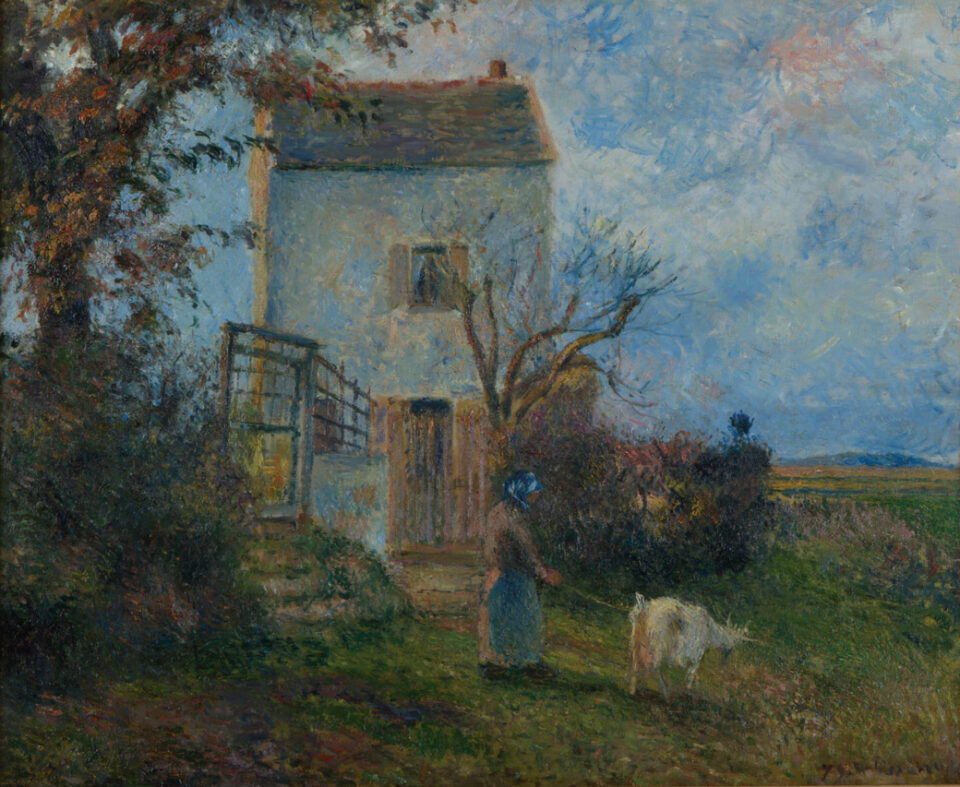La Ferme reflects Camille Pissarro’s passion for the rural landscape and the people who lived and worked there, as well as his changing style of painting. During the 1870s, his brushwork became looser, with fewer blended lines and colors, allowing each mark to stand out. La Ferme was likely painted near the town of Pontoise, outside of Paris, where Pissarro made his home from 1866 to 1883.
Camille Pissarro was a critical figure in the development of Impressionism and over his long career he associated with some of the most famous artists of his time, including Gustave Courbet, Jean-Baptiste-Camille Corot, Paul Cézanne, Alfred Sisley, Georges Seurat, Claude Monet, Jean-François Millet, Armand Guillaumin, Mary Cassatt, and Paul Signac.
Read More
Pissarro was born in St. Thomas in what was the Danish West Indies. While a Danish citizen by birth, his father was French, and so he was sent to a boarding school outside of Paris at the age of 12. Pissarro returned to St. Thomas at 17 and, while working in his father’s business as a cargo clerk, pursued art in his free time. While in St. Thomas he met the Danish artist Fritz Melbye, who encouraged him to pursue art full time and the pair spent the next several years painting in Venezuela. Pissarro returned to Paris in 1855 to study with Fritz’s brother, Anton Melbye.
Pissarro admired the paintings of Gustave Courbet and the Barbizon School and, like many artists of the day, took courses at the École des Beaux-Arts and Académie Suisse. Chafing at the strictures of academic training, he took lessons from Camille Corot, who encouraged him to paint outdoors. In 1859, he befriended Monet, Guillaumin, and Cézanne and became the informal leader of their growing circle. Pissarro and Cézanne exhibited in the 1863 Salon des Refusés and Pissarro was instrumental in the formation of the Société Anonyme des Artistes, Peintres, Sculpteurs et Graveurs, which held the first “impressionist” exhibition in 1874, to great public and critical controversy. When he met Georges Seurat and Paul Signac in 1885 Pissarro adopted many of their techniques, including the pointillism that characterized their Neo-Impressionist style, though he returned to his earlier way of working after several years, feeling the Impressionist manner that had defined his career to be more natural and true to the world. He also returned to the subject matter of his earliest works, focusing on the peasants at work in the countryside.
